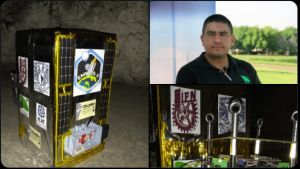CAPE CANAVERAL – NASA’s New Horizons spacecraft is now halfway between Pluto and its next much, much smaller stop.
New Horizons — which reached the milestone this week — is bound for an even more remote object called 2014 MU69. Like Pluto, the object orbits in our solar system’s twilight zone known as the Kuiper Belt, but is barely 1 percent its size. MU69 is nearly 1 billion miles (1.6 billion kilometers) beyond Pluto.
The spacecraft will swoop past MU69 on Jan. 1, 2019.
We’re halfway to our Jan. 2019 flyby of MU69, a distant KBO. What’s next? Sleep for a 157-day hibernation period. https://t.co/SwNkMnuaQF pic.twitter.com/GvUcFif1uu
— NASA New Horizons (@NASANewHorizons) April 4, 2017
“That flyby will set the record for the most distant world ever explored in the history of civilization,” chief investigator Alan Stern of Southwest Research Institute said in a statement.
With another 466 million miles (750 million kilometers) remaining, New Horizons will go into a five-month hibernation later this week.
Although still zooming along, the spacecraft is slowing down slightly as it gets farther from the sun. Besides aiming for MU69, New Horizons will study a couple dozen other Kuiper Belt objects from afar.
New Horizons arrived at Pluto in July 2015, becoming its first visitor from Earth. It launched from Cape Canaveral in 2006.
The spacecraft is currently 3.5 billion miles (5.7 billion kilometers) from home. It takes radio signals five hours and 20 minutes to reach the spacecraft from the control center at Johns Hopkins University (JHU) in Laurel, Maryland.
MARCIA DUNN










